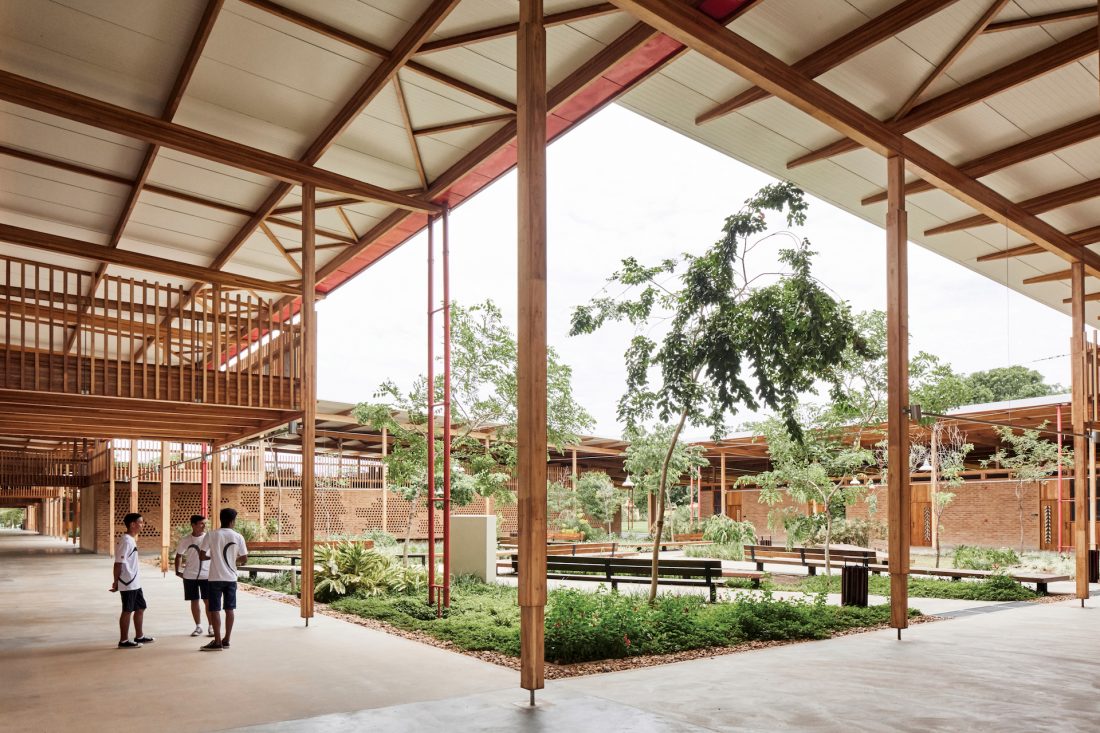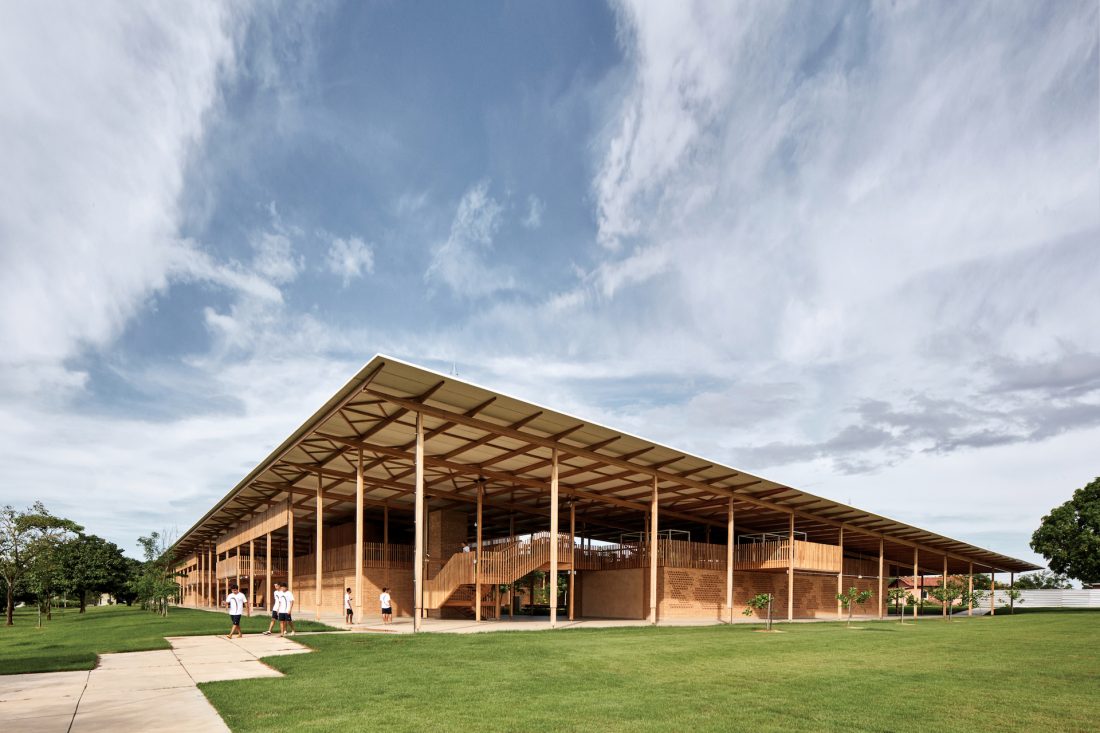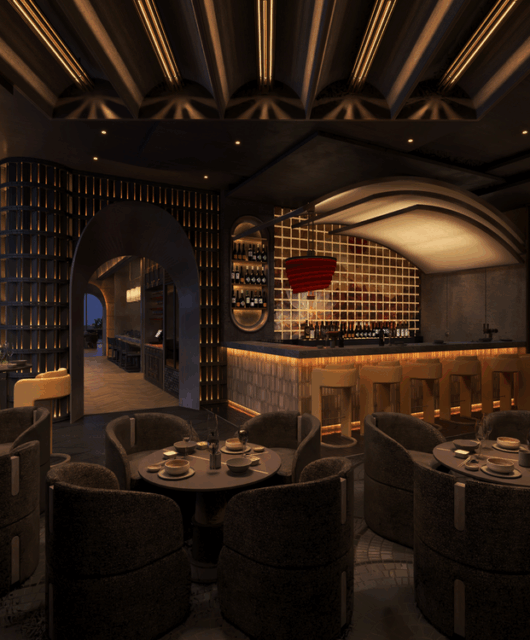 A new school complex on the edge of the rainforest in northern Brazil designed called Children Village by Brazilian architects—Aleph Zero and Rosenbaum have won the RIBA International Prize 2018.
A new school complex on the edge of the rainforest in northern Brazil designed called Children Village by Brazilian architects—Aleph Zero and Rosenbaum have won the RIBA International Prize 2018.
The RIBA International Prize is awarded every two years to a building that exemplifies design excellence and architectural ambition and delivers meaningful social impact. It is one of the world’s most rigorously judged architecture awards, with every long-listed building visited by a group of international experts. Children Village was chosen from a shortlist of four exceptional new buildings by a grand jury chaired by renowned architect Elizabeth Diller (DS+R)
Children Village provides boarding accommodation for 540 children aged 13 to 18 attending the Canuanã School. Pupils come from remote areas of the country, some travelling many hours by boat. Funded by the Bradesco Foundation, Children Village is one of 40 schools run by the foundation providing education for children in rural communities across Brazil.
The architects, Gustavo Utrabo and Petro Duschenes from Aleph Zero, designed Children Village in collaboration with Marcelo Rosenbaum and Adriana Benguela from architecture and design studio, Rosenbaum.
Central to their vision for the project was the idea of architecture as a tool for social transformation. The architects worked closely with the children to identity their needs and desires for their school. They wanted to create an environment that could be a home away from home, where children could develop a strong sense of both individuality and belonging. Replacing dormitories for 40 students, the new design provides rooms for six children in a more intimate environment.

The tropical climate, with summertime temperature in the mid 40°, was one of the major challenges cleverly addressed by the architects. The large canopy roof, the structure of which is made up of cross-laminated timber beams and columns, provides shading. The overhanging canopy design has created an intermediary space, between inside and out, giving the effect of a large veranda overlooking the surrounding landscape and creating a comfortable environment with no need for air conditioning.







